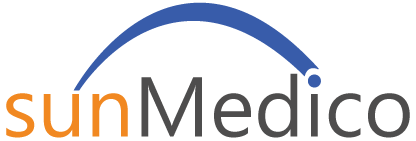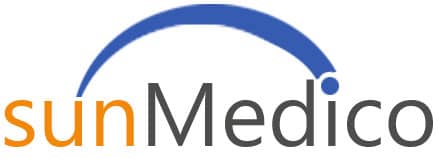When it comes to eyelid surgery, one of the most critical decisions you’ll make is choosing the right surgeon. This decision can significantly impact your surgical outcome and overall experience.
Qualifications: Ensuring Your Surgeon is Equipped for Success
When it comes to eyelid surgery, the qualifications of your chosen surgeon play a pivotal role in the success of the procedure. A well-trained surgeon with the right credentials and a proven track record can significantly reduce the risk of complications and ensure a satisfactory outcome.
Here are some key qualifications to look for when choosing your eyelid surgeon:
Specialized Training
Eyelid surgery, also known as blepharoplasty, is a delicate procedure that requires a high level of skill and precision. Therefore, it’s crucial to choose a surgeon who has undergone specialized training in this area. This includes completing a residency in ophthalmology, followed by additional fellowship training in oculoplastic surgery. This specialized training equips surgeons with the necessary skills to perform eyelid surgery safely and effectively, and to manage any eye-related postoperative complications should they arise.
Board Certification
Board certification is another important qualification to consider. A board-certified surgeon has met rigorous standards set by a recognized medical board, such as the American Board of Ophthalmology or the American Board of Plastic Surgery. This certification serves as a testament to the surgeon’s competence, skills, and commitment to maintaining the highest standards of patient care.
Experience and Expertise
The surgeon’s experience and expertise in performing eyelid surgery are also crucial. A surgeon with years of experience will have performed the procedure numerous times, honing their skills and gaining a deep understanding of the intricacies involved. Ask the surgeon about the number of eyelid surgeries they have performed and their success rate.
Patient Testimonials
Patient testimonials and reviews can provide valuable insights into the surgeon’s expertise and the quality of care they provide. These firsthand accounts can give you a sense of what to expect from the surgeon and the procedure. Look for consistent positive feedback about the surgeon’s skill, bedside manner, and the results achieved.
Patient Selection and Preoperative Assessment
The first step towards successful eyelid surgery is proper patient selection. The surgeon must thoroughly evaluate a patient’s motives and expectations to ensure they are legitimate and realistic. This involves asking critical questions such as, “Is this patient here for the right reasons, and do they have an easily correctable problem utilizing procedures that I am comfortable performing?”
A comprehensive preoperative assessment is also vital. This involves documenting the patient’s medical history, current health status, and any potential risk factors that could affect the surgery or recovery. The surgeon should also discuss the patient’s expectations and desired outcomes to ensure they align with what can realistically be achieved.
Surgical Planning and Technique
Once the patient has been deemed a suitable candidate for surgery, the next step is meticulous surgical planning. This involves determining the best surgical approach and techniques to use based on the patient’s unique needs and desired outcomes. The surgeon should also prepare for potential complications and have a plan in place to manage them should they arise.
The surgeon’s technique is another critical factor in the success of the surgery. A skilled and experienced surgeon will be able to perform the surgery with precision and care, minimizing the risk of complications and ensuring the best possible outcome for the patient.
Postoperative Care and Management of Complications
After the surgery, appropriate postoperative care is crucial. This involves monitoring the patient’s recovery, managing any pain or discomfort, and addressing any complications as soon as they arise. According to the study, patients should be made aware of typical postoperative expectations, including edema, eyelid numbness, dry eyes, and mild blurred vision.
In addition, the surgeon should be prepared to manage potential complications such as infection, hematoma, or severe vision loss. They should also be capable of handling other significant postoperative problems, including diplopia, lagophthalmos, eyelid malposition, severe chemosis and edema, crease abnormalities, and wound dehiscence.
Convenience: A Key Factor in Your Eyelid Surgery Journey
While the qualifications and expertise of your surgeon are paramount, the convenience factor should not be overlooked when choosing a professional for your eyelid surgery. This involves considering the location of the clinic, the availability of the surgeon, and the ease of scheduling follow-up appointments.
Location
The location of the clinic is a significant consideration. Travelling long distances for surgery can add stress and inconvenience to your experience. It’s beneficial to choose a clinic that is easily accessible, whether by public transportation, driving, or even walking. This becomes particularly important when considering postoperative visits for routine follow-ups and in the rare case of any complications.
Surgeon’s Availability
The availability of the surgeon is another crucial factor. It’s essential to choose a surgeon who is readily accessible for consultations, the procedure, and follow-up care. This ensures that you can receive timely care and have your concerns addressed promptly.
Scheduling Follow-Up Appointments
Eyelid surgery often requires several follow-up appointments to monitor healing and ensure the best possible outcome. The ease of scheduling these appointments can significantly impact your overall experience. Look for a clinic that offers flexible scheduling options, such as online booking, and consider the clinic’s hours of operation to ensure they align with your availability.
Conclusion
Choosing the right surgeon for your eyelid surgery is a decision that should not be taken lightly. It requires careful consideration and research. By selecting a surgeon who is experienced, meticulous in their planning and technique, and capable of managing complications, you can ensure that you are in the best hands for your surgery. Remember, open communication with your surgeon about your expectations and concerns is key to achieving the best possible outcome.











